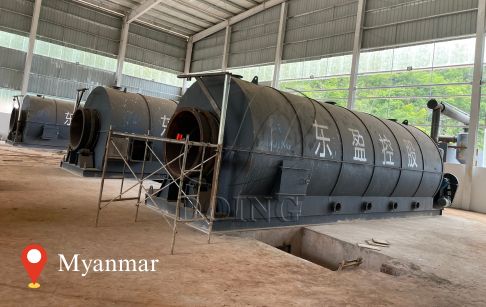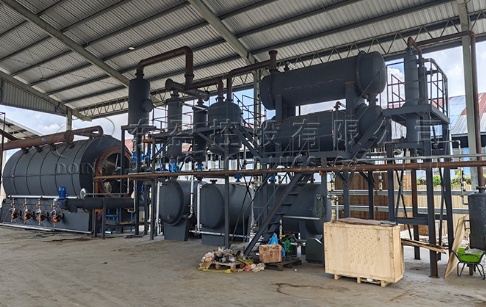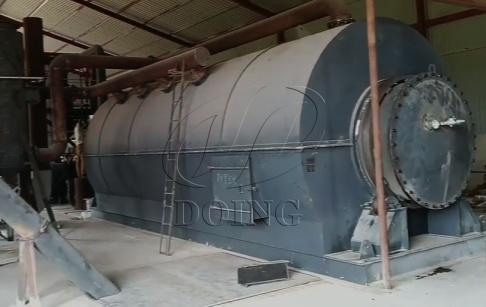
Product Center

Service Hotline:
+86-13526692320- Tel/WhatsApp: +86-13526692320
- E-mail: sales@doinggroup.com
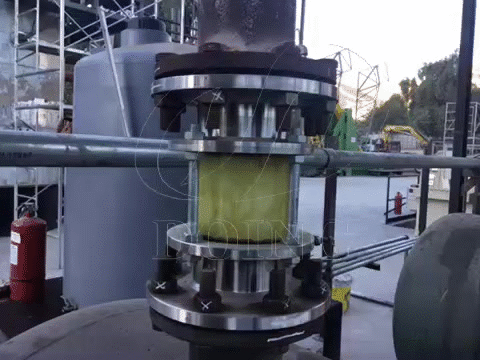
Is Tyre Pyrolysis the Same as Plastic Pyrolysis?
Tire pyrolysis and plastic pyrolysis are similar in basic principle (both involve decomposing high molecular polymers into small molecules through high temperature pyrolysis), but there are significant differences in raw material characteristics, product composition, process difficulties and environmental protection requirements. The following is a specific comparison:
Raw Materials
Tyre Raw Materials: Tyres are primarily composed of rubber, which exhibits high elasticity and contains a relatively high level of sulfur. Additionally, tyres contain steel wires. Before pyrolysis, the steel wires are suggested to be removed through pretreatment, such as shredding and separating the wires, especially for semi-continuous and fully continuous pyrolysis machine. Alternatively, if it is a batch pyrolysis machine, the steel wires can be dicharged after pyrolysis process from pyrolysis reactor.
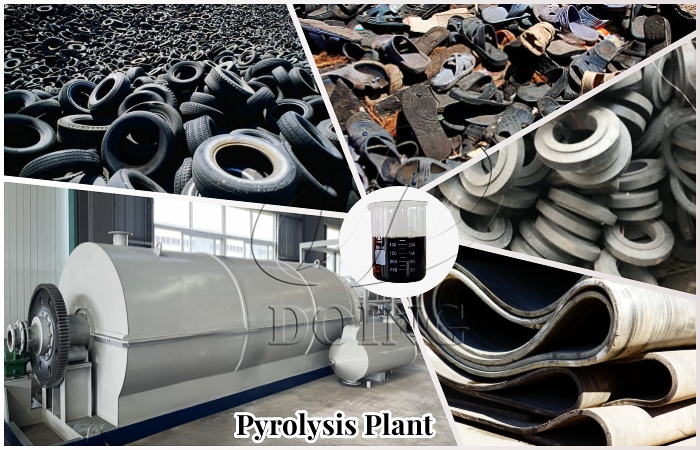
Tyre raw materials for pyrolysis
Plastic Raw Materials: Common plastics include PE, PP, PS, etc. These consist of pure polymers or mixed plastics with relatively low sulfur content. However, PVC and PET pyrolysis generates corrosive gases, such as hydrogen chloride, which can corrode reactors. More critically, improper PVC and PET pyrolysis may produce highly toxic substance which is extremely harmful to humans and the environment. Therefore, PVC and PET must be strictly excluded during plastic pyrolysis feedstock preparation.
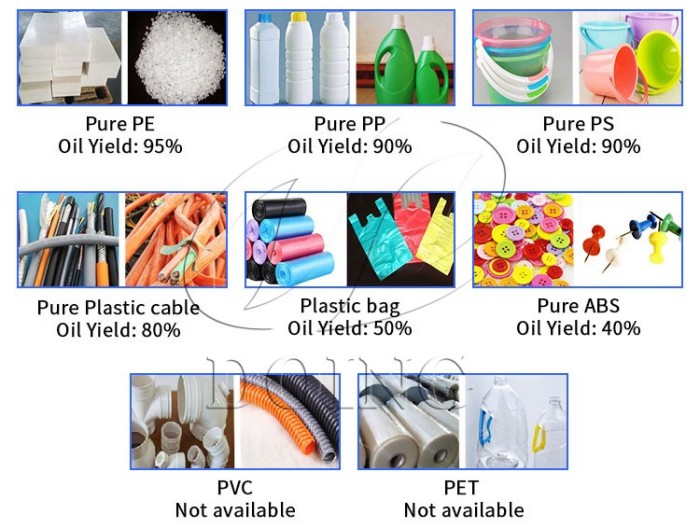
Plastic raw materials for pyrolysis
Pyrolysis Products
Tyre Pyrolysis Products: Tire pyrolysis oil is closer to heavy oil, and its sulfur content is slightly higher than that of plastic pyrolysis oil. Its application is closer to heavy oil industrial combustion. Tyre pyrolysis oil yield is about 35%–50%, with a dark brown color and high viscosity, due to the complex rubber and additives in tyres. Tyre pyrolysis also yields recyclable carbon black and steel wire.
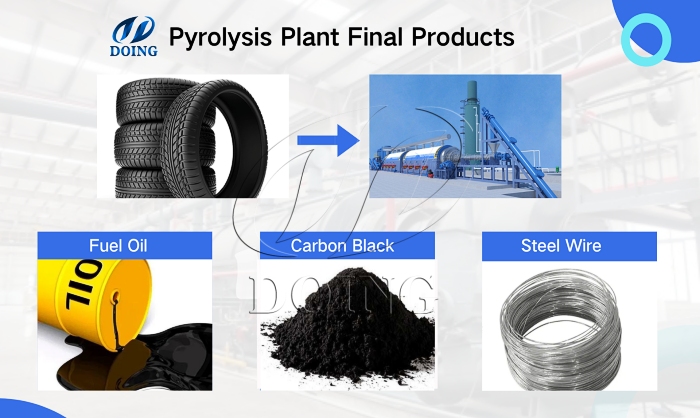
Tyre pyrolysis final products
Plastic Pyrolysis Products: Pyrolysis oil from plastics predominantly consists of light oil with minimal sulfur content. The carbon black yield is relatively low. Plastic pyrolysis oil yield is around 40%–90%, lighter in color (light brown or yellow) and less viscous. As for plastic pyrolysis oil, the refined non-standard diesel is of better quality and its indicators are closer to standard diesel.
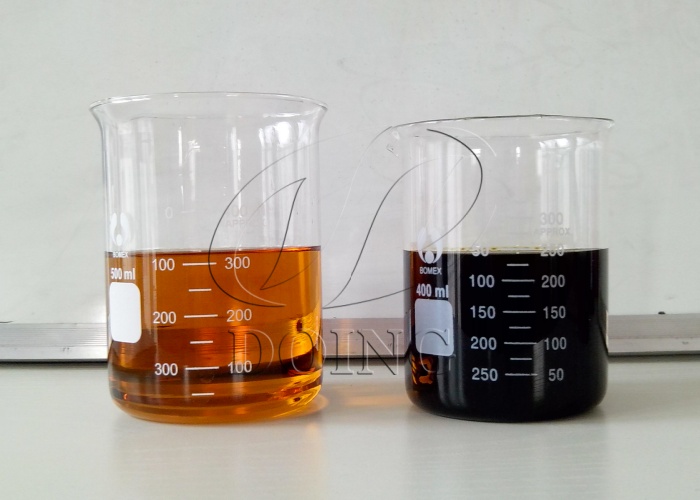
Plastic pyrolysis oil and tyre pyrolysis oil
Process Requirements
Tyre Pyrolysis: It is usually recommended to pre-treat the waste tires in advance and extract the steel wire to improve the efficiency of the entire cracking process, and to reduce the scratches of the steel wire on the reactor and the flying of carbon black. For this, we provide wire drawing machines, tire crushing equipment, tire bead cutting machines, etc. Tire pyrolysis typically occurs at 350℃–500℃.
Plastic Pyrolysis: Strict feedstock sorting is essential to avoid PVC and PET contamination and prevent equipment corrosion and dioxin generation. Additionally, some plastics require catalysts to facilitate pyrolysis and improve oil yield while preventing coking inside the reactor. Plastic pyrolysis generally occurs at 260℃–450℃.
Environmental Requirements and Economic Benefits
Tyre Pyrolysis: The high added value of steel wires and carbon black offers significant economic benefits. However, sulphur emissions during pyrolysis pose environmental risks. Advanced gas treatment systems, such as tail gas purification system and desulfurization tower, are necessary to ensure meeting regulatory standards emissions. These systems increase equipment investment and operational costs but are essential for sustainable operations.
Plastic Pyrolysis: The light oil produced can be directly used as fuel, providing economic value. However, mixed plastics exhibit varying pyrolysis efficiencies. Accurate feedstock classification is crucial. For instance, mixed plastic pyrolysis oil yield is lower than that of pure plastics, affecting economic returns. Moreover, the environmental risks associated with PVC and dioxins necessitate stringent emission controls, adding to operational costs.
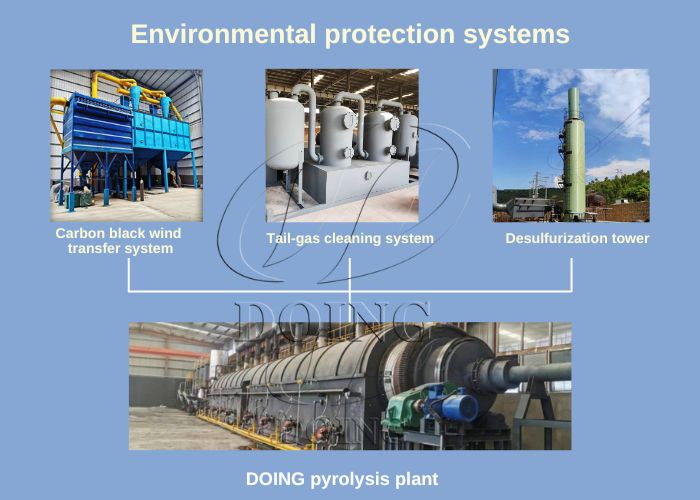
DOING pyrolysis machine environmental protection systems
In summary, while tyre pyrolysis and plastic pyrolysis share similarities in basic principles, they differ significantly in raw material characteristics, product composition, process requirements, and environmental requirements. So, when a customer asks whether tires and plastics can be mixed together for pyrolysis, we usually answer that it is not recommended to crack them at the same time, but tires and plastics can be cracked in batches using the same set of equipment.
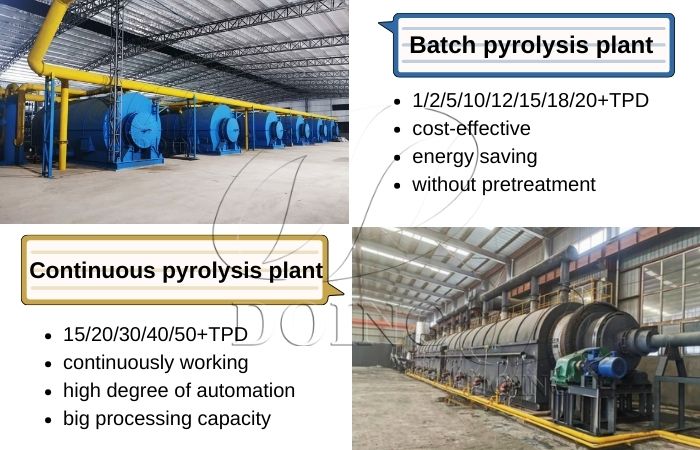
DOING batch and continuous pyrolysis machine
When selecting pyrolysis equipment or entering the pyrolysis industry, it is important to fully understand these differences to make informed decisions that maximize economic and environmental benefits.
Request a Quote for Pyrolysis Plant
Please leave your contact information and pyrolysis plant requirements so that our professional team can contact you as soon as possible.
